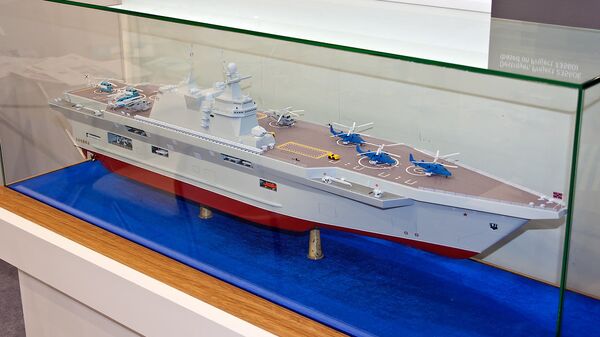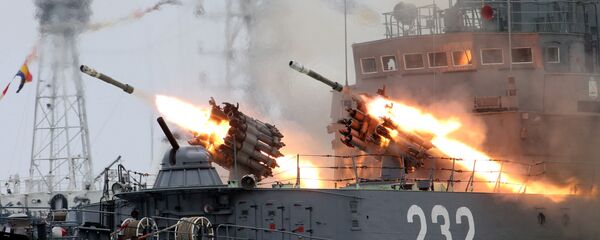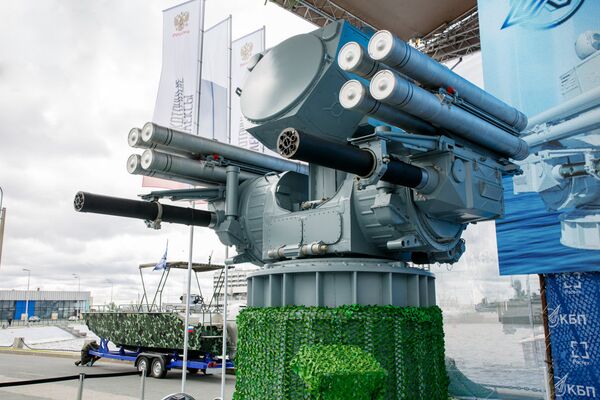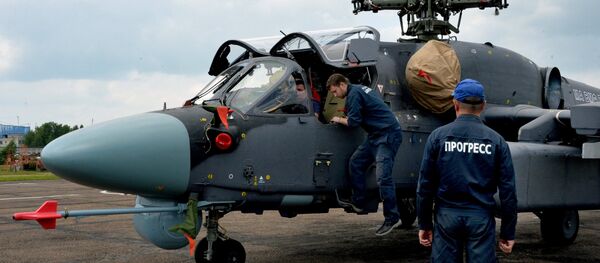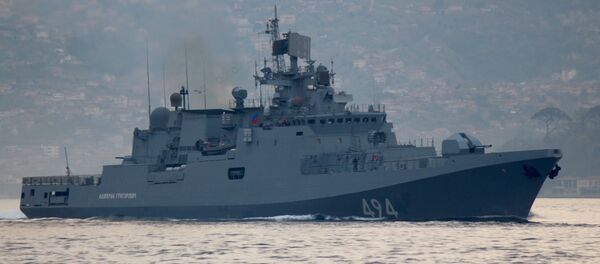Speaking to reporters on the sidelines of the International Maritime Defense Show 2017 in St. Petersburg this week, Bursuk said that the Navy was looking to take delivery of two new, domestically designed and built helicopter-carrying amphibious assault ships before the middle of the next decade.
The Navy had revealed the existence of a technical project for a new class of amphibious assault ship last year. The project is meant to replace the two French Mistral-class amphibious assault ships which Moscow ordered but never received.
*The Priboy ('Surf')-class amphibious assault ship is also known as the Lavina ('Avalanche')-class.
The need for the new ship, according to Khrolenko, stems from the Navy's demand for a large vessel which can transport and land troops and heavy equipment on an unprepared shore, carry out amphibious assault operations backed by the ship's air group, and deploy defensive mine and net barriers and sonar buoys for underwater observation in friendly territory.

The Priboy's design "is anything but simple," the analyst stressed. "Along with its dozen helicopters, it is designed to carry six assault boats and six landing craft with a capacity of 45 tons apiece. "Its air defenses include four combat modules, including the Pantsir-ME. Artillery is represented with the 76 mm universal naval gun."
Furthermore, the ship will have "an integrated command and control system at the tactical and tactical-operational levels, 3D radar, navigation system, an integrated electronic warfare subsystem and a system to detect underwater diversionary forces and assets."
"The story of the project's appearance is also interesting," he noted, "and has less to do with the disruption to the delivery of the French Mistrals than with the scientific and technical foresight of Russian specialists and the self-affirmation of Russian shipbuilding."
Valentin Belonenko, the head of prospective warship designs at the Krylov State Research Center, told RIA Novosti that even after the Defense Ministry made the decision to purchase the French ships, Russian engineers did not give up on the creation of new designs.
"When discussions began on the purchase of Mistrals in 2005, we clarified the purpose of the helicopter-carrying landing ship, analyzed global trends in shipbuilding, and, on our own initiative and using our own resources, began to create our own universal landing ship project. If we compare it to the Mistrals, our effort was from the start meant to create a ship with a larger capacity, a larger air group, and with a strong means of self-defense. We independently worked out several projects, conducted model-based testing, and examined new concepts. In this way, the conceptual design of the Priboy universal amphibious assault ship was born," Belonenko explained.
"Any ship is a compromise between dozens of different parameters," Khrolenko noted. "The Priboy is conceived as transport for about 500 assault troops and equipment, including tanks and infantry fighting vehicles, with the possibility for deboarding [directly onto] the shore. On board, it must have helicopters for combat and landing support. These functions demand an almost aircraft carrier-like deck, and architecture for helicopter hangers of two types" (on the deck itself and in the hull below deck).
Priboy's self-defense weaponry is minimal, but effective, and includes maritime versions of the Tor and Pantsir systems. The amphibious helicopter carrier is designed for operation in coordination with other ships, and accordingly features advanced radio-electronic and hydroacoustic equipment for monitoring the surrounding air and sea space.
Priboy is expected to have an estimated displacement of 23,000 tons, a 20 m-wide deck, and a 34 m hull width at the waterline. The prospective ship's length is estimated at about 200 meters.
Khrolenko noted that the Navy's bid for a new amphibious assault ship, and the Krylov Design Center's Priboy project could not come at a more optimal time. The Navy's previous generation of landing ships – the Project 1174 Nosorog ('Rhino'), was developed in the 1970s, and has since been retired.
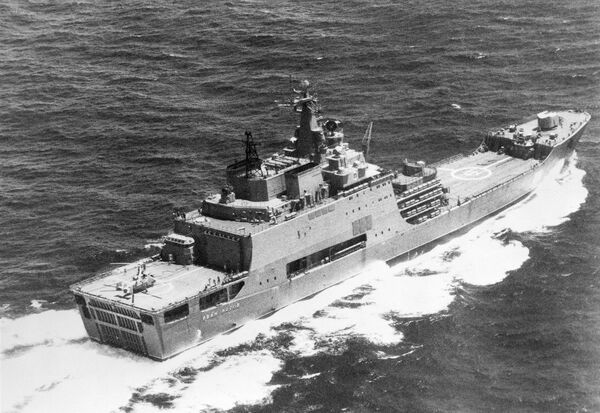
Valentin Belonenko explained that "after a decision is made at the state level, the ship can be built in five years. The rational organization of the technological process of design and construction will significantly shorten the time necessary to lower the hull into the water. The ship should not be built from individual components, but from assembly units or modules."
Ultimately, Khrolenko emphasized that "today, our shipbuilders and sailors are reluctant to recall the 'French story'. The Mistral is a serious piece of equipment, developed by taking into account the experiences and traditions of [French] shipbuilding. However, the French classify the Mistral as a command ship – that is, simultaneously a transport, command center for heterogeneous forces, and even a hospital. It may be that such a functional load is excessive for one ship, given that it reduces combat survivability. Let the Mistrals serve our Egyptian friends. Meanwhile, Russian shipbuilders are determined to surpass the French project."
